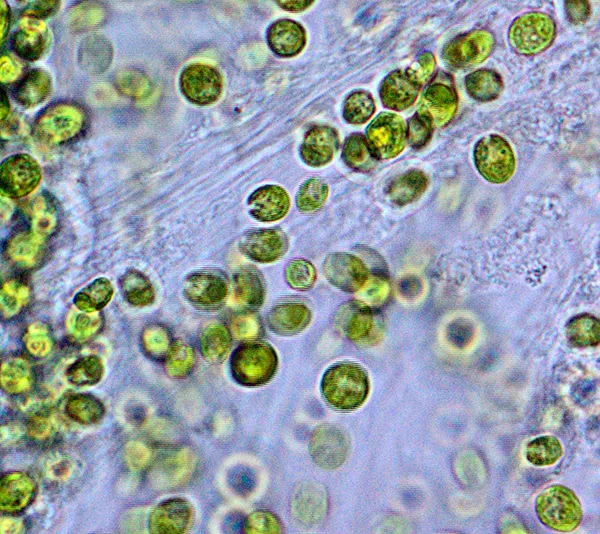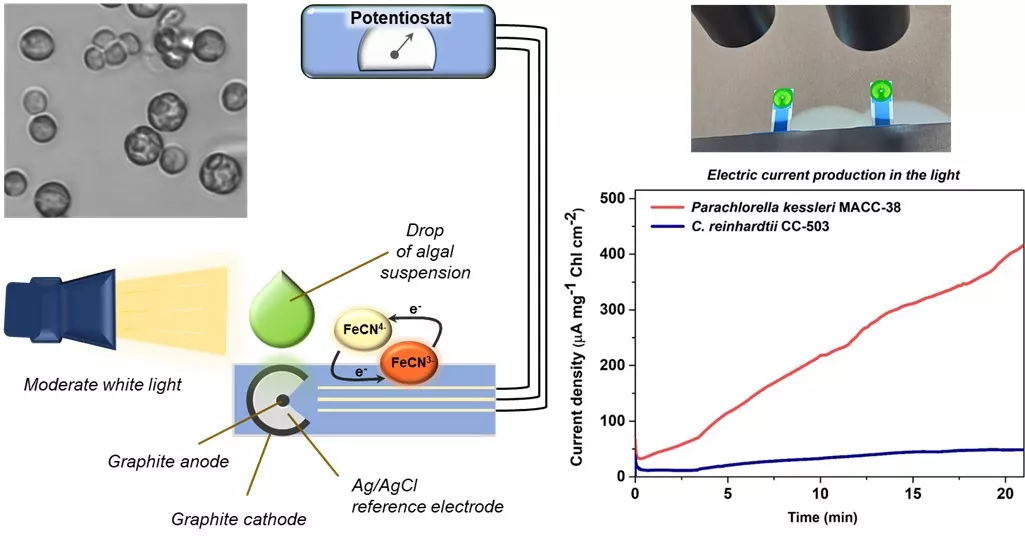Researchers from the Plant Biology Institute of the HUN-REN Biological Research Centre, Szeged (HUN-REN BRC) have identified a green alga strain with approximately ten-fold higher electric current generation capability than algae species previously described in the literature. The application of the Parachlorella kessleri MACC-38 algal strain in biophotovoltaic (BPV) devices could significantly enhance the efficiency of power generation, making them a promising green alternative to fossil energy sources. The paper presenting the results of the research carried out by the Molecular Photobioenergetics Group, led by Scientific Advisor Szilvia Zita Tóth, with Nia Petrova as the leading author, has been published in the prestigious journal Bioresource Technology.
The appearance of plant and animal life on Earth was made possible by photosynthetic light-energy conversion. Photosynthetic species produce organic matter and oxygen using the energy from sunlight, along with the utilisation of carbon dioxide and water. Interestingly, photosynthetic microalgae are also capable of generating electrical current as components of so-called biophotovoltaic (BPV) devices, which hold promising potential as renewable energy sources.

In BPV devices, microalgae capture the energy from light, and then a portion of the electrons passing through the photosynthetic system leaves the algal cell, creating electrical current with the help of mediator molecules. However, the efficiency of BPV devices at present is still so low that their industrial-scale usability remains a distant prospect for now.
Highly exoelectrogenic algal strains, capable of generating significant electrical current, may offer a potential solution to enhance the performance of BPV devices. HUN-REN BRC researchers have identified a green algal strain, Parachlorella kessleri MACC-38, which exhibits approximately ten-fold higher electrical current generation compared to algae species previously documented in the literature. The MACC-38 strain primarily generates current through photosynthesis, and the algal cells maintain their viability throughout the process. Utilising the MACC-38 strain can significantly boost the efficiency of BPV devices, potentially making them a promising green alternative to fossil energy sources with a negative carbon footprint.

The electrical current production of the Parachlorella kessleri MACC-38 green algal strain is outstanding. In biophotovoltaic devices, upon illumination, a portion of electrons generated from the photosynthesis of green algae reduces a mediator molecule (ferricyanide, FeCN) that produces electrical current at the electrode (left-hand diagram). The electrical current production of the Parachlorella kessleri MACC-38 strain identified by the research group is approximately ten-fold higher compared to the reference Chlamydomonas reinhardtii CC-503 strain (right-hand diagram).